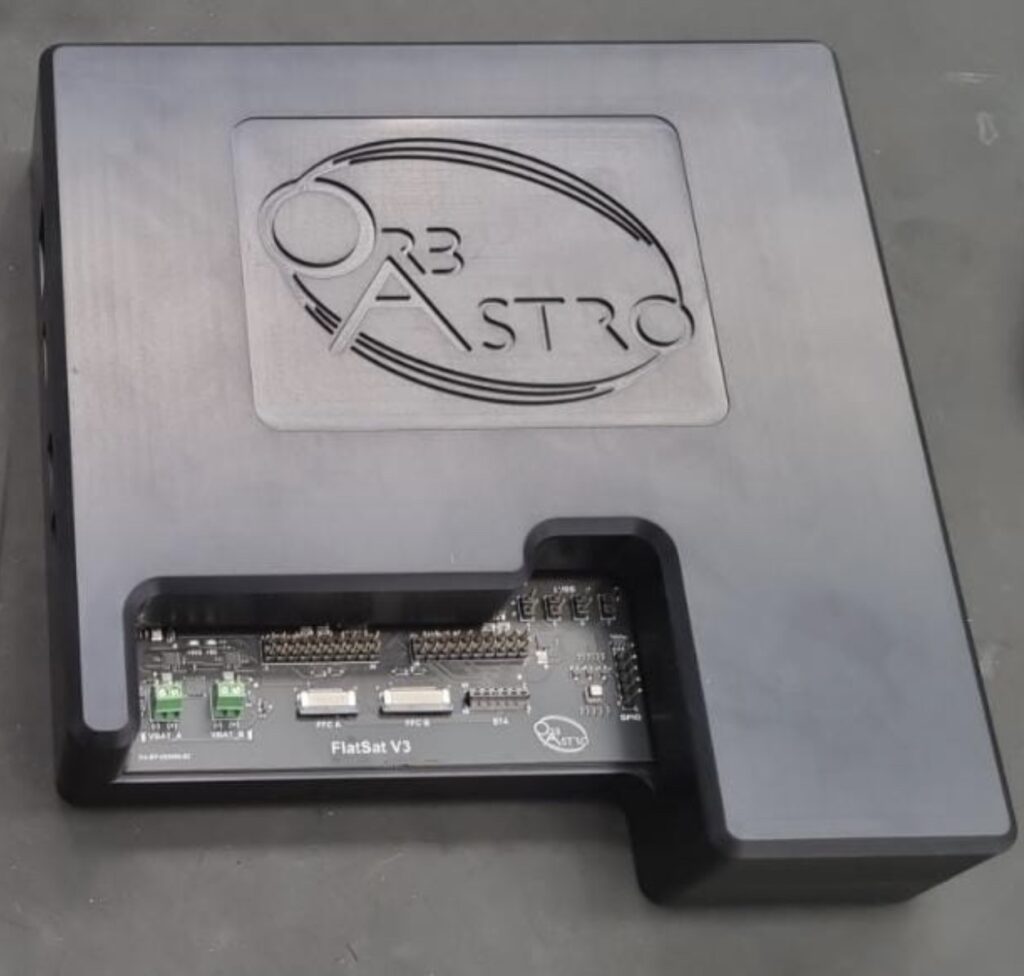The OrbAstro flat-sat is an all-in-one platform for design, development, testing, validation and operations of payloads and OrbAstro satellites. The flat-sat:
Is based on the OrbAstro Telos-10 OBC
Is fully compatible with all OrbAstro satellite platforms.
Allows user to develop payload/platform with real hardware/software interfaces
Has all hardware/software required for end-to-end testing and in-orbit operations
Is designed with actual flight software to simulate/test the payload at different stages in the mission

Interfaces:
Power interface 1 – 3: Operating voltage: 8 – 18V, Max current: 5A
Power interface 4 : Operating voltage: 5V, Max current: 3A
Power interface 5: Operating voltage: 3V3, Max current: 3A
I2C: 2x interfaces @10, 100, 400, 1000 kHz
SPI: 1x interfaces @1, 10, 40 MHz
USART: 2x interfaces, up to 1 Mb/s
CAN: 2x interfaces, up to 1 Mb/s
LVDS: 10 pairs, up to 1.2 Gbps per pair
PCIe 3.0, up to x4 (coming soon)
USB 2.0 (coming soon)
ESA Nanosatellite Framework (coming soon)
CubeSat Space Protocol (coming soon)
Custom interfaces available on request
Software Development Kit:
The Software Development Kit is comprised of modules specifically designed to accelerate the development of the payload in a comprehensive way. The modules help the user navigate through key obstacles associated with the design of a payload/satellite for the space environment, including: mission design, power budgeting and design, thermal design, radiation tolerance and shielding design.
All flat-sat modules are run on a dedicated 1.5 petaFLOPs OrbAstro datacentre.
Developed in collaboration with:

This module provides access to all the data and power interfaces required for operations of the payload. Command sequencing and timed operations are programable to the flat-sat through this interface. The command sequencing tested on the flat-sat can be directly applied to the TT&C link for the satellite. This module will act as a customer interface to access the Guardian Network for in-orbit operations.
Mission-level operations can be simulated and validated; power available, time until solar phase, automated power up/down. This module provides the payload with platform data, including satellite position, pointing, Sun and Earth vectors, power management, etc.
T his module, along with the flat-sat hardware, will validate the payload with hardware-in-the-loop testing and software qualification.
This module is designed with all tools needed to perform mission analysis and simulations based on mission/payload requirements. Key features are orbit calculations, power calculations, useable power and operating mode design for solar and eclipse modes, payload volume for few different platforms. Options like deployable panels, propulsion, additional battery, etc., can be added to understand the increased value of the mission. This module generates the orbital data needed for the other modules.
Coming soon.
This module includes the tools needed to understand the radiation environment and design effective measures to protect the payload/satellite. Proton/electron energy levels and flux densities through various parts of the orbit are calculated. The module contains a library of 100+ materials for utilisation in radiation shield design. Specific areas of the orbit (e.g. SAA), where the proton energy levels and flux densities are high, can be isolated. These areas can be programmed on the OBC to turn off the payload/satellite.
What’s in the box:
Flat-sat unit
Interface cables
Access to OrbAstro Software Development Kit
License keys for all the modules and link to datacentre
Price:
£3,000 per quarter, hiring fee.
Includes hardware, software, and technical support.
Order Form:





